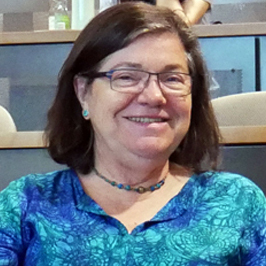EDUCATION

Paleopathology as a New Scholarly Activity for MD Undergraduate Students at UBC
As of 2015, the UBC MD undergraduate medical program includes a longitudinal scholarship course that spans Years 1, 2 and 4 of the curriculum. The FLEX (Flexible Enhanced Learning) course offers half days and dedicated full-time block time where students engage in scholarly work that they choose to address their learning goals and objectives. This curricular space has provided an opportunity to introduce students to paleopathology though a unique project titled “Hands on Archaeological and Medical Records”.
The first step in developing this project was the creation of a repository of images of human bones with pathological conditions; this work was supported by the hands-on access to archaeological bone collections graciously granted to me by the University of Bournemouth and the British Museum in the UK. Later, on a visit to Colombia during a 2017 sabbatical period, I was able to broaden the collection of bone images with additional archaeological material from the National University of Colombia.
“Hands on Archaeological and Medical Records” was added to the FLEX Activity Catalogue in 2018 and initially offering to second and fourth year medical students (as they would have gained some of the required knowledge of anatomy that would be helpful in this project). Students who undertook the project were provided with the opportunity for ‘hands-on’ work with bone pathologies (including describing abnormalities in bones, suggesting differential diagnoses and exploring other topics that interest in paleopathology).
As an Activity Supervisor for this project, I provide images of bones with pathological conditions from the above noted collections and oversee the work the students do, guiding their learning and directing them additional resources, as needed. Expected student deliverables include provisional and differential diagnoses. Along the way students learn to develop a systematic approach, a crucial skill when studying and understanding skeleton lesions. Using images of bones, students develop the differential diagnoses of pathological and traumatic conditions in the skeletal remains.
-
These include:
- congenital abnormalities,
- joint diseases,
- infectious (bacterial) diseases,
- metabolic diseases, and
- endocrine disorders.
Early in 2021, a first year MD undergraduate student interested in this project approached me, asking if it was possible to select the activity (which had only been offered to second and fourth year students up to that point). Recognizing that the student need to learning more about the human body before engaging in this project, we worked on a plan to help the student prepare. Taking a Coursera course titled “Osteoarchaeology of Care: The Truth about our Bones”, allowed the student to become familiar with bone terminology, sex determination, age at time of death, estimation of nutritional components and patterns of mobility and activities. This course, offered by the Faculty of Archaeology, University of Leiden, Netherlands, is comprised of five weeks of assignments. The student met with me virtually each week, to discuss what new knowledge had been obtained from the course and how it applied to paleopathology, resolve pertinent questions and describe abnormalities of the limited bone images that I had provided.
Opening up this project to an interested and engaged first year medical student allows for an early introduction into paleopathology and offers an incentive for the student to continue longitudinally with the project into years two and four of the FLEX Program. “Hands-on Archaeological and Medical Records” as a FLEX project allows students to learn interesting and novel interpretations of anatomy and offers an introduction to historical care provision. Students in fourth year have the opportunity to learn about the end stages of diseases that are rarely seen today. This experience is a distinctive supplement to their clinical training.

